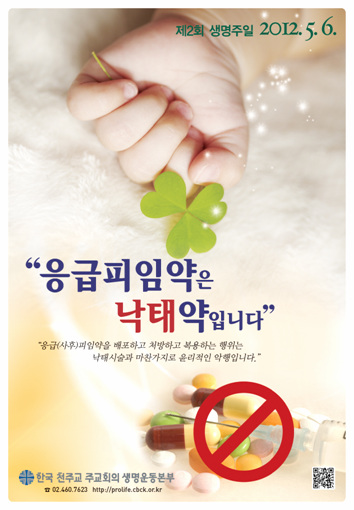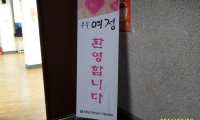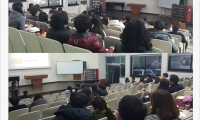
||0||0미국주교회의 생명운동본부 -사실 보고서
응급피임약은 준비되지 않은 임신과 낙태를 줄이는 데 실패했다
[이 보고서는 2011년 4월 6일 게재된 미국 가톨릭교회 주교회의 보고서이며 원본 전문은 하단에 별첨되어 있습니다. 보고서의 핵심을 쉽게 볼 수 있도록 원본 중 임상의 실례와 관계된 부분만 발췌해서 번역했습니다. 번역: 낙태반대운동연합 김현철]
응급피임약의 사용을 지지하는 사람들은 “응급피임약을 쉽게 구입할 수 있게 하면 낙태율을 50% 이상 줄일 수 있을 것이다.”라고 주장을 했었다.
[Family Planning Perspective, 제임스 트러셀, “응급피임약: 준비되지 않은 임신을 줄일 수 있는 간단한 제안”, 1992년]
그러나 그러한 추정은 가설이었을 뿐 응급피임약 지지자들도 가시적인 통계자료가 전혀 다른 사실을 보여주고 있다는 것을 인정하기 시작했다(2006년).
“전문가들은 준비되지 않은 임신과 낙태가 1/2로 줄어드는 것을 보게 될 것이라고 예측을 했다. 그러나 현실에서는 그런 일을 보지 못하고 있다.”
[커스틴 무어, Reproductive Health Technology Project 회장, 2006년]
‘50%이상 감소’를 주장했던 제임스 트러셀조차도 10개국에서 공식적으로 보고된 23개의 연구결과가 그의 주장이 틀렸다는 것을 보여준다는 사실을 시인했다. 1998년부터 2006년 사이에 보고된 23개의 연구가 하나같이 “응급피임약을 쉽게 구하고 사용하면 준비되지 않은 임신이나 낙태가 상당히 줄어든다는 통계를 얻는 데 실패했다.”고 밝히고 있다.
[Obstetrics & Gynecology, E. 레이몬드, “응급피임약 복용증가에 따른 인구효과”, 2007년]
스코틀랜드
정기적으로 성관계를 하는 여성 18,000명에게 응급피임약을 5팩씩 사전 지급하고 16개월 후의 결과를 보았다. 연구결과는 다음과 같다. “응급피임약을 미리 준비시켜도 낙태율에는 영향이 없었다. 보건소를 통해서 광범위하게 응급피임약을 사전 보급하는 것은 영연방국가에서 준비되지 않은 임신율을 낮추는 데 효과적인 방법이 될 수 없다.”
[Contraception, 안나 글래지어, “응급피임약 사전 보급이 낙태율을 낮추지 못한다.”, 2004년]
미국
샌프란시스코만 연안지역의 여성 2,000명 이상을 무작위로 골라 3개 실험그룹으로 나누었다. 제1그룹: 응급피임약 사전 지급, 제2그룹: 약국에서 어떻게 응급피임약을 구할 수 있는 방법을 교육, 제3그룹: 병원에 가서 응급피임약 처방을 받도록 지시. 실험군 여성의 80%는 평소에 피임을 하고 있는 중이었다. 6개월 후, 3개 그룹의 여성들 중 7~8%가 그룹 간 차이 없이 임신을 했다.
[Journal of the American Medical Association, T. 레인, “응급피임약을 처방전 없이 약국에서 직접 구하는 것이 준비되지 않은 임신과 성병에 미치는 영향”, 2005년]
중국
상하이의 경산부(經産婦) 2,000명을 2개 그룹으로 나누어 연구했다. 제1그룹(실험군) 여성들에게는 응급피임약 대신에 전문낙태약인 미페프리스톤을 3 단위씩(세 번 낙태를 실행할 수 있는 양) 보급하고 ‘원하는 대로’ 사용할 수 있게 했다. 비교군인 다른 그룹 여성들은 미페프리스톤을 의사의 처방을 통해서만 구할 수 있게 했다. 두 그룹 모두 응급피임약은 슈퍼마켓에서 원하는 대로 구입해서 병용할 수 있게 했다. 제1그룹 여성들은 비교군 여성들보다 응급피임약을 두 배 더 사용하는 것을 알 수 있었다. 그러나 1년 후의 결과를 보면, 두 그룹 간 임신율이나 낙태율에는 차이가 없었다. “이 연구는, 증가하는 ‘낙태율을 잡기 위해서는 응급피임약을 더 많이 사용해야 한다.’는 주장을 의심하게 만드는 여러 연구보고서들에 또 하나의 추가된 보고서가 되었다.”
[Contraception, 샤오위 후, “중국의 경산부에게 응급피임약을 사전 보급했으나 낙태율에는 변화가 없었다.”, 2005년]
잉글랜드
잉글랜드 청소년들에게 처방전 없이 무료로 응급피임약을 구할 수 있게 했을 때의 결과를 조사했다. “응급피임약 방식은 임신율에 변화를 주지 못했다. 도리어, 약국에서 응급피임약을 직접 구입할 수 있게 하는 방식은 청소년 성병이 5% 증가된 것과 유관하다. 16세 이하의 청소년까지 응급피임약을 확대 보급했을 때는 성병감염률이 12%까지 증가한다. 이 연구결과는 응급피임약의 사용 증가가 청소년의 위험한 성행위를 증가시킨다는 가정이 유의미하다는 것을 보여준다.”
[Journal of Health Economics, S. 저마 & D. 페이튼, “응급피임약이 십대 임신과 성병에 미치는 영향”, 2010년]
응급피임약 전문 연구가인 안나 글래지어는 British Medical Journal 2006년 9월호 사설에서 위의 연구결과에 동의했다. “응급피임약 사용이 뚜렷하게 증가했음에도 불구하고 영국연방국가에서 낙태율은 떨어지지 않았다. 오히려 1984년 1,000명 당 11명에서 2004년 1,000명 당 17.8명으로 증가했다. 다른 국가들에서 보고된 10개의 연구자료를 보면, 응급피임약을 미리 보급 받아 집에 소지하고 있는 여성들은 두 배, 세 배로 응급피임약을 더 많이 사용하게 되는 것을 알 수 있다. 그러나 임신율이나 낙태율에는 눈에 띄는 변화가 없다. 낙태율을 줄여보고자 하는 억제책을 생각하고 있다면, 응급피임약은 해결책이 될 수 없다.”
[British Medical Journal, 안나 글래지어, “응급피임약: 열광할만한 가치가 있는가?”, 2006년]
스코틀랜드
“지금까지의 경험으로는 효과의 증거가 없다. 스코틀랜드에서 응급피임약의 처방률은 꾸준히 배가되고 있지만 십대 임신과 낙태의 감소는 관측되지 않고 있다.”
[Scottish Council of Human Bioethics, A. 윌리엄스, “모닝애프터필(응급피임약)”, 2005년]
스웨덴
“최근에는 스웨덴 전국 어디에서나 응급피임약을 쉽게 구할 수 있게 되었지만, 낙태율은 증가하고 있다. 특히 젊은 층의 낙태가 증가하고 있다.”
[Lakartidningen, T. 타이든, “응급피임약을 쉽게 구하게 해도 낙태는 줄어들지 않았다.”, 2002년]
미국
워싱턴 주에서 1998년 2월부터 1999년 6월까지 응급피임약을 처방전 없이 일반의약품으로 구입할 수 있도록 하고 결과를 조사했다. “응급피임약 사용의 증가가 준비되지 않은 임신과 낙태를 줄일 수 있다면, (응급피임약으로 인해) 임신율과 낙태율이 감소했다는 수치상의 증거가 있어야 한다. 지난 20년 동안 워싱턴 주의 낙태율은 최저 수준까지 왔다는 것은 분명한 사실이다. 1997~1998년 연간 낙태율은 5% 낮아졌다. 그러나 이것은 워싱턴 주만의 경우는 아니다. 같은 기간 미국 전국의 낙태율이 같은 비율로 낮아졌다. (응급피임약을 자유롭게 구할 수 있게 한 이후인) 1999년에는 워싱턴 주의 임신율과 낙태율이 약간 높아졌다.”
[Family Planning Perspectives, J. 가드너, “지역 약국을 통한 응급피임약의 보급 증가: 워싱턴 주의 교훈”, 2001년]
註: 구트마허연구소(Guttmacher Institute)의 보고서를 따르면, 1996~2000년 미국 전국 낙태율이 5% 감소했을 때 워싱턴 주는 3%만 감소했다.
“응급피임약은 ‘믿음’에 비해서는 ‘실제적인 효과’가 적다. 응급피임약의 효과는 신뢰성 없는 데이터와 수많은 가정(假定)에 근거했기 때문에 과거에도 효과에 대해서는 의문이 있었고 현재에 이르러서는 더욱 신뢰할 수 없다. 응급피임약을 (적극적으로) 사전에 보급했을 때 ‘몇 명’은 ‘가끔’ 임신을 피할 수 있었겠지만, 응급피임약 정책은 공중보건 증진에 희망을 갖게끔 하지는 않는다.”
[Contraception, 안나 글래지어, “응급피임약 사전 보급이 낙태율을 낮추지 못한다.”, 2004년]
Fact Sheet: Emergency Contraception Fails to Reduce Unintended Pregnancy and Abortion
Supporters of Plan B and other types of “emergency contraception” (EC) used to claim that easier access to EC could “result in a greater than 50% reduction in abortion rates.” J. Trussell et al., “Emergency Contraception: A Simple Proposal to Reduce Unintended Pregnancies,” Family Planning Perspectives 24 (Nov/Dec 1992): 6.
However, that estimate came from a hypothetical “modeling exercise.” In 2006, Plan B supporters began to admit that the hard data tell a different story:
“[T]he experts had estimated that we would see a drop by up to half in the rates of unintended pregnancy and the rates of abortion. And in fact in the real world we're not seeing that.” Kirsten Moore, President and CEO of Reproductive Health Technologies Project, quoted in A.W. Schachter, “‘Plan B’: What Science Can't Tell Us,” New York Post Online Edition, Aug. 11, 2006.
The following year even the author of the “greater than 50% reduction” claim, James Trussell, conceded that 23 published studies from 10 countries disprove his claim. According to every one of the 23 studies, published between 1998 and 2006, easier access to EC fails to achieve any statistically significant reduction in rates of unintended pregnancy and abortion. E. Raymond et al., “Population Effect of Increased Access to Emergency Contraceptive Pills,” Obstetrics & Gynecology 109 (2007): 181-8.
Some of these studies reviewed country-wide statistics on unintended pregnancy and abortion after EC became inexpensive (or free) and widely available in health clinics or over-the-counter in pharmacies. Other studies compared results between women given packets of EC for future use, and a control group of women who had to acquire EC on their own. In the latter type of study, women given EC in advance were more likely to use it, but no statistically significant difference in unintended pregnancy or abortion was found between the two groups.
These studies from the U.S., Europe, and China are among those demonstrating the complete failure of EC to reduce rates of unintended pregnancy and abortion:
Sixteen months after 18,000 sexually active women in a health district in Scotland were each given 5 packets of EC, researchers concluded: “No effect on abortion rates was demonstrated with advance provision of EC. The results of this study suggest that wide-spread distribution of advanced supplies of EC through health services may not be an effective way to reduce the incidence of unintended pregnancy in the UK.” A. Glasier et al., “Advanced provision of emergency contraception does not reduce abortion rates,” Contraception 69 (May 2004): 361-6 at 361 (www.cwfa.org/images/content/scotland0905.pdf; visited Apr. 6, 2011).
Over 2,000 women in the San Francisco Bay area were randomly assigned to one of three groups. The first group was given packets of EC; the second was told how to obtain EC free from pharmacies; the third had to return to the clinic for EC. Over 80% of the women were also using another form of contraception. After six months, 7-8% of women in each group were pregnant. “We did not observe a difference in pregnancy rates in women with either pharmacy access or advance provision [of EC]; the adjusted risk of pregnancy for both treatment groups was not significantly less than 1. Previous studies also failed to show significant differences in pregnancy or abortion rates among women with advance provisions of EC. It is possible that the effect of increased access on pregnancy rates is truly negligible because EC is not as effective as found in the single-use clinical trials, or because women at highest risk do not use EC frequently enough or at all.” T. Raine et al., “Direct Access to Emergency Contraception Through Pharmacies and Effect on Unintended Pregnancy and STIs,” Journal of the American Medical Association 293 (2005): 54-62 at 61 (http://jama.ama-assn.org/content/293/1/54.full.pdf; visited Apr. 6, 2011).
Hu et al. conducted a randomized, controlled trial of 2,000 postpartum women in Shanghai, China (who would have a strong incentive not to become pregnant within a year of giving birth because this is forbidden by the government). Half were given 3 courses of mifepristone to use at home as emergency contraception (EC) “as needed.” The other half (control group) had to see a doctor to obtain mifepristone. Both groups could also purchase a Plan B-type emergency contraceptive at supermarkets. Women in the first group used EC twice as frequently as those in the control group, but there was no difference in pregnancy or abortion rates after one year. “This study adds to the growing literature casting doubt on the increased use of EC as a quick fix for rising abortion rates. That is not to say that EC will not prevent pregnancy for some women, sometimes, but rather that it may not make much difference to public health.” Xiaoyu Hu et al., “Advanced provision of emergency contraception to postnatal women in China makes no difference in abortion rates: a randomized controlled trial,” Contraception 72 (2005): 111-6.
Examining the impact of free, over-the-counter EC for teenagers in England, researchers reported: “The EBC [emergency birth control] scheme had no impact on conception rates.” However, “the presence of a pharmacy EBC scheme in a local authority is associated with an increase in the rate of STI diagnoses amongst teenagers of about 5%. The equivalent figure for [children under-16] is even larger at 12%.” This “is consistent with the hypothesis that greater access to EBC induces an increase in adolescent risky sexual behavior.” S. Girma and D. Paton, “The Impact of Emergency Birth Control on Teen Pregnancy and STIs,” Journal of Health Economics (2011), doi:100.1016/j.healeco.2010.12.004.
EC researcher Anna Glasier seconds that observation in a September 2006 editorial in the British Medical Journal: “[D]espite the clear increase in the use of emergency contraception, abortion rates have not fallen in the U.K. They have risen from 11 per 1000 women ... in 1984 ... to 17.8 per 1000 in 2004.” She adds: “Ten studies in different countries have shown that giving women a supply of emergency contraception to keep at home ... increases use by twofold to threefold ... but [has] had no measurable effect on rates of pregnancy or abortion.” She concludes: “If you are looking for an intervention that will reduce abortion rates, emergency contraception may not be the solution.” Anna Glasier, Editorial, “Emergency Contraception: Is it worth all the fuss?”, British Medical Journal 333 (2006): 560-1.
“Another commonly held view for which there is no documented evidence is that improving knowledge about and access to Emergency Contraception will reduce the number of teenage pregnancies. ... Experience of use so far does not give any evidence of effectiveness. Prescribing rates of the morning-after pill have multiplied steadily in Scotland while there has been no observed decline in the rate of teenage pregnancies or abortions.” A. Williams, “The Morning-After Pill,” Scottish Council of Human Bioethics (Nov. 2005) (www.schb.org.uk/downloads/publications/morning-after_pill.pdf; visited Apr. 6, 2011).
“Despite the fact that emergency contraceptive pills (ECP) have become easily available across the country during recent years, abortion numbers continue to rise in Sweden, especially in the young age groups (<25).” T. Tyden et al., “No reduced number of abortions despite easily available emergency contraceptive pills,” Lakartidningen 99 (2002): 4730-2, 4735 (abstract at www.ncbi.nlm.nih.gov/pubmed/12523048; visited Apr. 6, 2011).
Summarizing findings of the Washington State Pilot Project, which allowed pharmacies to dispense EC without a prescription from February 1998 to June 1999, researchers noted: “If the increased accessibility of emergency contraception reduces unintended pregnancy, there should be evidence of reduced pregnancy and abortion rates. To be sure, abortions in Washington reached the lowest level in two decades, dropping by 5% from 1997 to 1998. ... However, the national abortion rates also were declining during this period. ... In 1999, both pregnancy rates and rates of induced abortion increased slightly in Washington State.” J. Gardner et al., “Increasing Access to Emergency Contraception Through Community Pharmacies: Lessons from Washington State,” Family Planning Perspectives 33 (2001): 172-5 at 174-5 (www.guttmacher.org/pubs/journals/3317201.pdf; visited Apr. 6, 2011). Note: The Guttmacher Institute reported a 5% decline nationally in the abortion rate between 1996 and 2000, compared to a drop of only 3% in Washington state.
Anna Glasier concedes in her above-cited study that “EC may be less effective than we belief [sic]. Estimates of efficacy are unsubstantiated by randomized trials. Efficacy is based on rather unreliable data and a great many assumptions and have been questioned both in the past and more recently. ... While advanced provision of EC probably prevents some pregnancies for some women some of the time, the strategy did not produce the public health breakthrough hoped for.” A. Glasier, Contraception, op. cit., at 365.
The 2007 study by Raymond, Trussell and others, cited above, even casts doubt on the usual claims made for EC’s effectiveness for the individual user: “[W]e can be 95% confident that it reduces pregnancy risk by more than 23%. But just how much more remains poorly defined; the published efficacy figures … . on average, approximately 80% . may overstate actual efficacy, possibly quite substantially. Clearly, if the method is weakly efficacious, it is unlikely to produce a major reduction in unintended pregnancy no matter how often women use it.” E. Raymond et al., Obstetrics & Gynecology, op cit., at 187.
미국주교회의 생명운동본부 홈페이지 기사입력 4/6/11
http://www.usccb.org/prolife/issues/contraception/contrafactsheet.pdf















